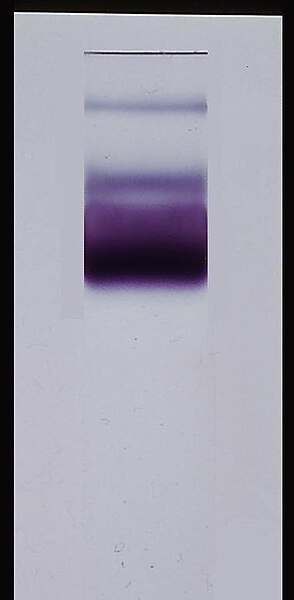Oliver Smithies was a British-American geneticist and physical biochemist. He is known for introducing starch as a medium for gel electrophoresis in 1955, and for the discovery, simultaneously with Mario Capecchi and Martin Evans, of the technique of homologous recombination of transgenic DNA with genomic DNA, a much more reliable method of altering animal genomes than previously used, and the technique behind gene targeting and knockout mice. He received the Nobel Prize in Physiology or Medicine in 2007 for his genetics work.
Smithies with the American Institute of Chemists Gold Medal (2009)
Oliver Smithies (second on the left)
Gel electrophoresis is a method for separation and analysis of biomacromolecules and their fragments, based on their size and charge. It is used in clinical chemistry to separate proteins by charge or size and in biochemistry and molecular biology to separate a mixed population of DNA and RNA fragments by length, to estimate the size of DNA and RNA fragments or to separate proteins by charge.
Gel electrophoresis apparatus – an agarose gel is placed in this buffer-filled box and an electric current is applied via the power supply to the rear. The negative terminal is at the far end (black wire), so DNA migrates toward the positively charged anode(red wire). This occurs because phosphate groups found in the DNA fragments possess a negative charge which is repelled by the negatively charged cathode and are attracted to the positively charged anode.
Inserting the gel comb in an agarose gel electrophoresis chamber
Specific enzyme-linked staining: Glucose-6-Phosphate Dehydrogenase isoenzymes in Plasmodium falciparum infected Red blood cells





